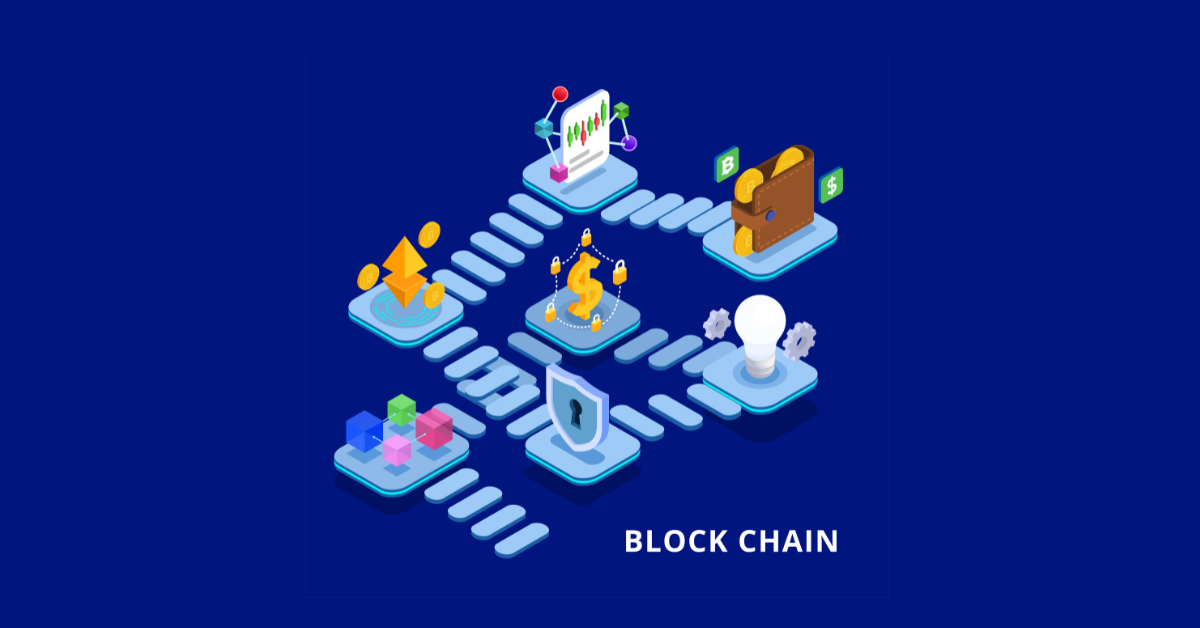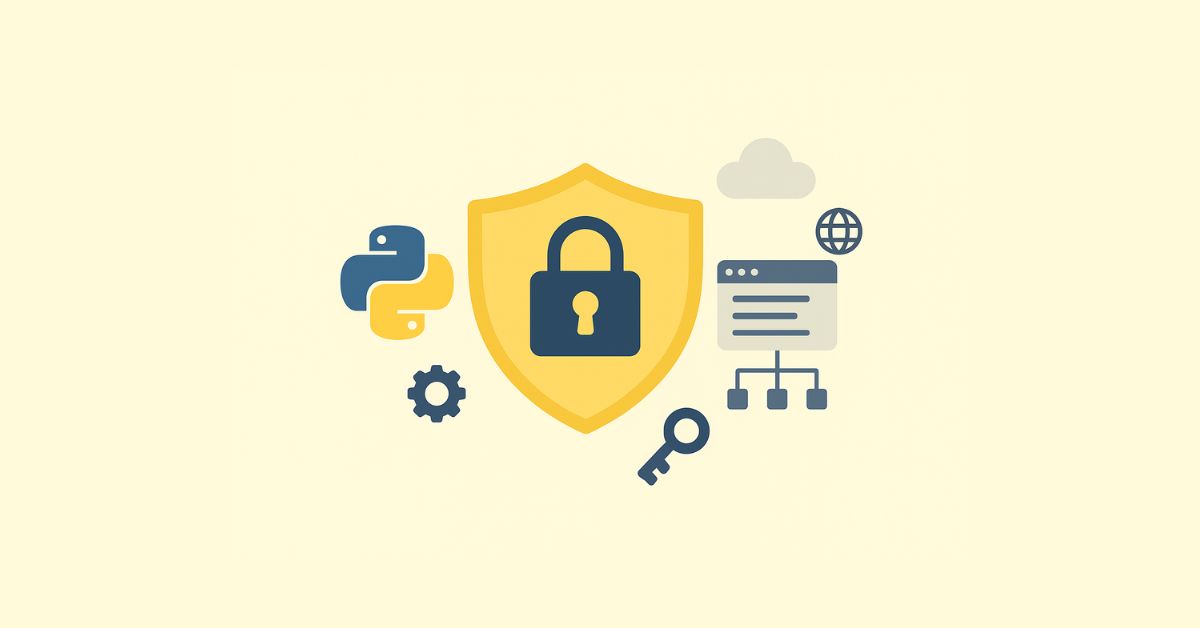Blockchain is no longer an experiment. Today, it powers payment rails, tokenized assets, supply-chain verification, decentralized finance, and new models for identity and data sharing. This guide explains what blockchain is, how it works, how to develop blockchain solutions, why it matters now, the tools you’ll use, real-world industry uses, the benefits, and what to watch next. Wherever a factual claim benefits from verification, I added a citation to a reliable source.
- What is Blockchain Technology?
- How Blockchain Works
- How to Develop a Blockchain Solution — step by step
- Types of Blockchain
- Importance of Blockchain — why it matters now
- Tools and Technologies for Blockchain Development
- Blockchain Security Best Practices
- Uses of Blockchain in Different Industries (practical examples)
- Benefits of Blockchain Technology (business perspective)
- Challenges in Blockchain Adoption
- Future of Blockchain — trends to watch (2025+)
- Conclusion — practical next steps for businesses
What is Blockchain Technology?
At its most basic, a blockchain is a distributed, tamper-resistant ledger. Participants keep synchronized copies of a ledger of transactions; cryptography links each block to the previous one, so altering history becomes prohibitively difficult. Because the ledger is shared and validated by network participants, blockchain can remove the need for a centralized trusted intermediary for certain processes.
Two quick clarifications businesses ask about:
- Blockchain is a type of distributed ledger technology. Not every DLT is a blockchain, but blockchain is the dominant, widely implemented form.
- Public blockchains (Bitcoin, Ethereum) are permissionless and open to anyone. Permissioned or private blockchains are restricted and often used inside companies or consortia. Both have trade-offs depending on the use case.
How Blockchain Works
A working blockchain has four building blocks:
- Data structure (blocks) — transactions are grouped into blocks; each block contains a hash of the previous block, so the chain is cryptographically linked.
- Consensus mechanism — nodes agree on which blocks are valid. Common mechanisms are Proof of Work and Proof of Stake; PoS is now widely used on major smart contract platforms because it uses far less energy.
- Smart contracts — programmable logic that runs on the chain (for example, a token contract or an automated settlement rule). Smart contracts make blockchains programmable platforms, not just ledgers.
- Networking and storage — nodes share blocks and transactions; decentralized storage systems (IPFS, Filecoin) are often used for off-chain files referenced by on-chain records.
Put together, these elements let you record events in a way that is visible to participants, hard to tamper with, and (if public) globally verifiable.
Click here to understand in detail about how blockchain technology works
How to Develop a Blockchain Solution — step by step
Below is a practical blockchain development roadmap you can follow for most enterprise or product projects.
1. Clarify the business case
Start with the specific problem you will solve. Ask: Does a distributed ledger add measurable value over a traditional database? Common winning cases are multi-party workflows, asset tokenization, auditability, and trust minimization. Use pilot projects to validate KPIs.
2. Choose the right architecture
Decide between public, permissioned, or hybrid architectures:
- Public chains (Ethereum, EVM-compatible) for open ecosystems and composability.
- Permissioned chains (Hyperledger Fabric, R3 Corda) for regulated industries and private workflows.
- Layer-2 or rollup solutions for high-throughput/low-fee needs.
3. Pick core tech and frameworks
Typical stack elements:
- Smart contract languages: Solidity, Vyper, Rust (for Solana, Substrate).
- Dev frameworks: Hardhat and Foundry for EVM development; OpenZeppelin for battle-tested contract libraries and security best practices.
4. Build and test locally
Use local chains and toolkits (Anvil from Foundry, Hardhat Network) to iterate quickly. Add unit tests, integration tests, and property-based tests.
5. Security, audit, and automated checks
Run static analysis and fuzz testing during CI. Popular tools include Slither for static analysis, MythX for automated vulnerability scanning, and Echidna for fuzz testing. Then schedule a professional audit before mainnet deployment.
6. Infrastructure and node access
For production dApps, you will use managed node providers or your own node fleet. Alchemy and Infura are common choices for managed Ethereum access; IPFS/Filecoin for decentralized storage.
7. Oracles and off-chain data
If your contract needs external data (prices, shipment status), use decentralized oracles such as Chainlink to feed trustworthy data into contracts. Plan for Oracle availability, latency, and economic security.
8. Deployment and monitoring
Use CI/CD to deploy to testnets and then mainnet. Add runtime monitoring and incident playbooks. If using OpenZeppelin Defender or similar, add relayers and automated monitors for critical functions.
9. Governance, compliance, and ops
Prepare governance rules for upgrades, keys, multisig, data retention and privacy, and legal compliance with local regulators. Consider how to handle upgrades and emergency pausing safely.
Types of Blockchain
Not all blockchains are the same. Depending on the level of decentralization, access, and governance, blockchains are divided into four main types:
1. Public Blockchain
Public blockchains are completely open and decentralized. Anyone can join the network, validate transactions, or even create new blocks. They’re best known for powering cryptocurrencies like Bitcoin and Ethereum.
- Advantages: High transparency, strong security, and community-driven.
- Limitations: Slower transaction speeds, energy-intensive, scalability challenges.
2. Private Blockchain
In a private blockchain, access is restricted to a single organization or a selected group. Only authorized users can validate and participate in the network. Examples include Hyperledger Fabric and Multichain.
- Advantages: Faster transactions, better privacy, controlled access.
- Limitations: Less decentralized, potential single point of failure.
3. Consortium (Federated) Blockchain
Consortium blockchains are managed by a group of organizations working together. This approach is common in industries where collaboration between multiple entities is necessary, such as banking or supply chain management.
- Advantages: Balanced governance, faster transactions than public chains, and more secure than private chains.
- Limitations: Coordination among members can be complex.
4. Hybrid Blockchain
A hybrid blockchain combines both public and private features. Organizations can keep some data private while making other parts of the blockchain publicly accessible. This is useful for industries like healthcare and finance, where sensitive data must remain secure, but transparency is also valuable.
- Advantages: Flexible, customizable, efficient.
- Limitations: Complex to design and maintain.
Read in detail about the main 4 Types of Blockchain Technology
Importance of Blockchain — why it matters now
Blockchain matters because it changes foundational assumptions about trust and ownership in digital systems:
- Tokenization makes real-world assets (real estate, bonds, private equity) tradeable on-chain, drastically reducing settlement times and opening liquidity channels. Major market infrastructure groups and exchanges are actively piloting or launching tokenized issuance.
- Auditability and traceability improve supply-chain transparency and compliance in regulated industries. Projects using blockchain for provenance save time on reconciliation and tracing.
- Programmable money and finance (DeFi and tokenized assets) enable composable financial services that can automate custody, settlement, and compliance. Central banks are also exploring tokenized money in CBDC pilots.
In short, blockchain can reduce friction in multi-party processes, unlock new business models, and enable real-time settlement and transparency where those properties matter.
Tools and Technologies for Blockchain Development
Below are the categories you’ll see in most production stacks, with the top examples.
Blockchain Programming Languages
- Solidity — dominant language for EVM smart contracts.
- Rust — used on Solana and in Substrate/Polkadot ecosystems.
- Vyper — Pythonic alternative for EVM.
Blockchain Development Frameworks and Libraries
- Hardhat — flexible Ethereum dev environment for compiling, testing, and deploying.
- Foundry — fast Rust-based dev toolkit (forge, cast, anvil). Favored for speed and heavy test suites.
- OpenZeppelin Contracts — audited, reusable smart contract building blocks (tokens, governance, access control).
Infrastructure and node services
- Infura, Alchemy — node-as-a-service providers that remove the overhead of running validator or RPC nodes.
- IPFS / Filecoin — decentralized file and artifact storage for off-chain content referenced by on-chain pointers.
Oracles and external data
- Chainlink — decentralized oracle network providing price feeds, verifiable randomness, and external data to smart contracts.
Security tooling
- Slither — static analysis for Solidity.
- MythX — vulnerability scanning service.
- Echidna — property-based fuzzer for smart contracts. These tools are standard in CI pipelines before audits.
Layer 2 and scaling stacks
- Optimistic rollups (Optimism, Arbitrum) and ZK rollups (zkSync, StarkNet, polygon zkEVM) reduce gas costs and increase throughput while inheriting security from the base chain. ZK tech is especially important for private / compliance-sensitive use cases because of its privacy and succinct proofs.
Blockchain Security Best Practices
Security is the foundation of blockchain adoption. Even though blockchains are secure by design, vulnerabilities can occur if best practices aren’t followed. Businesses developing blockchain solutions should keep these measures in mind:
1. Smart Contract Audits
Smart contracts should undergo thorough audits to detect vulnerabilities like reentrancy attacks or logic flaws. Independent security firms and automated tools (e.g., MythX, Slither, OpenZeppelin) are often used for this.
2. Key Management and Wallet Security
Private keys are the gateway to blockchain assets. Using multisignature (multisig) wallets, hardware wallets, and secure key storage prevents unauthorized access.
3. Data Encryption
Even though blockchain transactions are immutable, off-chain data must be encrypted to avoid leaks or breaches.
4. Regular Penetration Testing
Simulating real-world attacks helps organizations uncover weaknesses before hackers exploit them.
5. Compliance and Governance
Adopting security standards (ISO, GDPR, industry-specific rules) ensures blockchain systems remain trustworthy and legally compliant.
Uses of Blockchain in Different Industries (practical examples)
Finance and capital markets
Tokenized bonds, tokenized private equity, and on-chain settlement pilots are live at exchanges and financial firms. Tokenization shortens settlement times and enables fractional ownership.
Supply chain and logistics
Immutable tracking of provenance and condition sensors reduces fraud and speeds recalls. Blockchain provides a single source of truth across multiple participants and geographies.
Understandind in detail of Blockchain For Supply Chain Management
Healthcare
Secure data sharing, patient-centric health records, and tamper-resistant audit trails for clinical trials. Privacy-preserving techniques are key here.
Real estate and property
Tokenized property ownership enables fractional investment and faster transfers, useful for private markets and secondary liquidity.
Government and identity
Verifiable credentials, land registries, and voting pilots experiment with blockchain, where transparency and audit trails matter. Implementation focuses on privacy, scalability, and legal validity.
Know in detail about the Benefits of Blockchain Technology for Different Sectors
Benefits of Blockchain Technology (business perspective)
- Transparency and auditability: shared ledger reduces reconciliation.
- Disintermediation and lower settlement friction: faster settlement, fewer intermediaries for certain processes.
- New business models: tokenization, subscription marketplaces, programmable finance.
- Security and immutability: cryptographic guarantees make tampering visible and expensive.
Remember: benefits are strongest where multiple, independent parties need a shared truth. If you only need a single party’s ledger, blockchain may not add value over modern databases.
Read full guide of Top Benefits of Blockchain Technology for Businesses
Challenges in Blockchain Adoption
No technology is perfect. These are the most common real-world constraints to plan for:
- Scalability and cost — public blockchains can be congested and costly for high-frequency workloads; Layer 2 or permissioned architectures are typical workarounds.
- Security risk — smart contracts are code that handles value; bugs can be catastrophic. Security tooling, audits, and careful ops are essential.
- Regulatory uncertainty — rules for tokens, stablecoins, and on-chain securities are evolving fast; region-specific compliance is necessary. In Europe, MiCA sets an EU-wide baseline.
- Interoperability and fragmentation — many chains and standards exist; cross-chain protocols and bridges introduce complexity and risk.
- Talent and cost — specialist developers, auditors, and DevOps for web3 are in high demand. Partnering with experienced integrators often speeds delivery.
Future of Blockchain — trends to watch (2025+)
- Tokenization at scale — the movement to put real-world assets on-chain is accelerating in capital markets and private assets. Expect more exchange-led infrastructure and regulated token offerings.
- Zero-knowledge proofs and ZK rollups — ZK tech is maturing fast. ZK rollups and ZK-based privacy primitives will drive high-throughput, low-cost, privacy-preserving apps.
- CBDCs and regulated digital money — multiple central banks are moving from research to pilots or limited rollouts for consumer and wholesale CBDCs. These will reshape payment rails and settlement architectures worldwide.
- Stronger regulation and compliance frameworks — regional rules like MiCA in the EU show that regulators are moving from permissive to structured supervision. Expect more jurisdictional clarity in the next 12–36 months.
- Enterprise adoption for specific, high-value use cases — supply chain provenance, trade finance, and tokenized capital markets will continue to see enterprise rollouts backed by large integrators and cloud vendors.
Read the current top 10 Blockchain Technology Trends to Follow in 2025
Conclusion — practical next steps for businesses
If you’re evaluating blockchain for your organization, follow this pragmatic path:
- Validate the business case with measurable KPIs.
- Run a focused pilot with clear success criteria.
- Use proven dev stacks (Hardhat, Foundry, OpenZeppelin) and managed infrastructure (Alchemy, Infura).
- Bake security into CI/CD with Slither, MythX, Echidna, and independent audits.
- Plan for regulation and governance from day one.
Blockchain is a strategic choice, not a tactical bandage. When chosen and executed for the right problems, it unlocks faster settlement, new ownership models, and higher assurance across multi-party processes.
Need help now?
Looking to build a secure and scalable blockchain solution? Contact GrapesTech Solutions, we are leading Blockchain Development Company to your business needs. Contact us today to start your blockchain journey.








